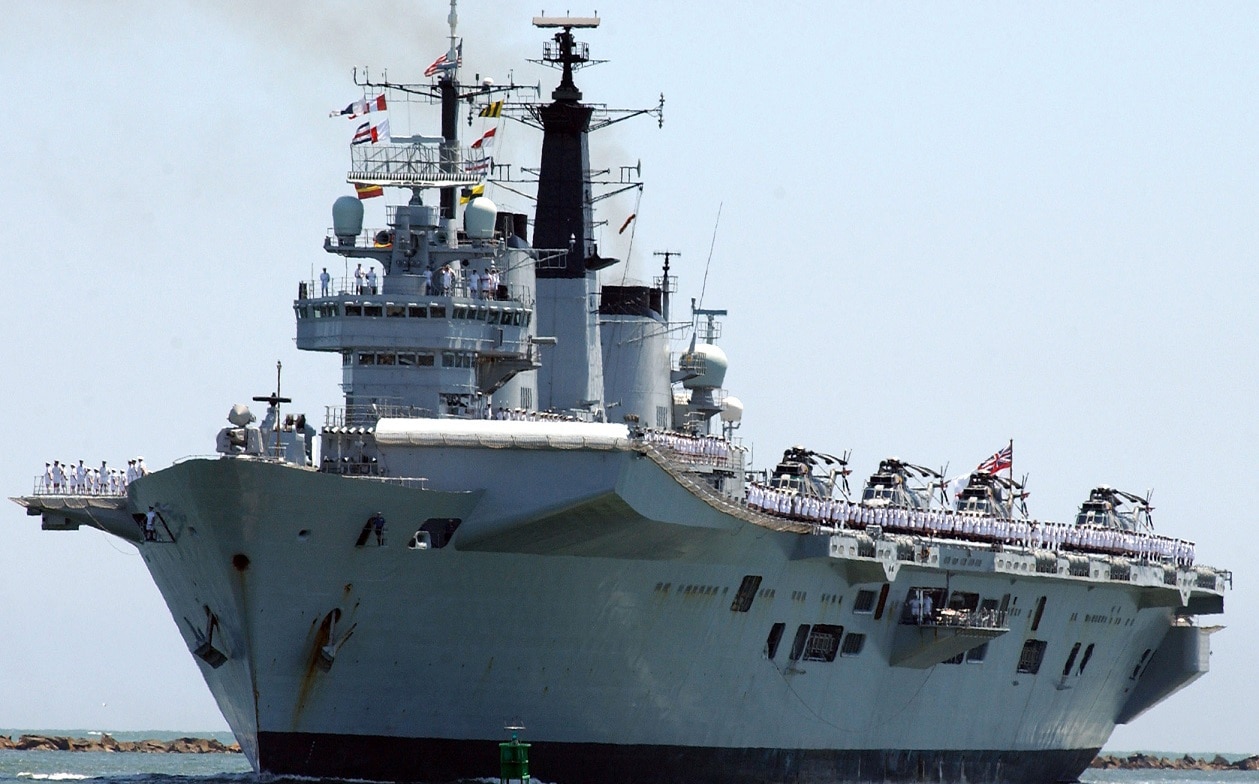Falklands War, The Aircraft Carrier War That Never Occurred: In 1982, after years of simmering tensions, Argentina and the UK went to war over a small island chain in the south Atlantic.
The Falklands War was one of the largest conflicts since World War II and featured major operations. British special operators raided deep inside Argentina, submarines and aircraft attacked and sank warships, and infantrymen fought hand to hand for strategically located hills.
The Falklands War is also notable for a near miss: The war almost had the first aircraft-carrier clash since World War II.
A war long coming
Almost 8,000 miles south of the UK but only 300 miles east of Argentina, the Falkland Islands were a point of contention between the two nations ever since the British colonized them in the 19th century.
Argentina’s junta ordered the invasion in spring 1982, partly to distract the Argentine public from the country’s deepening socioeconomic problems and the junta’s own abuses. Argentine leaders didn’t think the British would go to war over a small group of islands where a few thousand people tended to a sheep-driven economy.
But British Prime Minister Margaret Thatcher, facing her own domestic struggles, responded forcefully to the crisis, galvanizing the British people.
A task force of over 100 British ships sailed to war in the remote south Atlantic, and the Argentines prepared to intercept them before they arrived.
The aircraft carriers
The Falklands War found the British military in a bad state. Every service branch had been gradually downsizing since the end of WWII.
While reductions to the wartime military were essential for the British economy, deep cuts by successive Labor and Tory governments left the Royal Navy able to provide only two small aircraft carriers — the HMS Hermes and the HMS Invincible — to protect the British task force.
The two carriers could carry only about 20 Sea Harrier fighter jets, short-take-off and vertical-landing aircraft that didn’t need a “regular” flattop to operate. The two carriers had distinctive ski-jump ramps on their bows to aid the Harriers during takeoff.
The British also converted transport and cargo ships into aircraft carriers. The converted ships were mainly meant to deliver aircraft to the true carriers, but they could also launch Sea Harriers and helicopters.
The Argentines weren’t in much better shape. Their navy could field only one secondhand aircraft carrier, the 40-year-old ARA Veinticinco de Mayo, which was first commissioned into the Royal Navy. It was later sold to the Dutch, in whose service it suffered a fire that damaged its boilers, before finding its way to Argentina.
These forces almost clashed in what would have been the most significant naval battle since WWII.
A near-run thing
On May 1, 1982, as the British task force was approaching the Falklands, the Argentines prepared to strike, amassing an armada of one cruiser, five destroyers, three corvettes, and the Veinticinco de Mayo. Dozens of land-based aircraft would provide air cover.
The plan was to launch eight A-4Q Skyhawks from the Veinticinco de Mayo to strike the British aircraft carriers, which would allow other warships to get within range to launch their deadly Exocet anti-ship missiles against the slow-sailing transport ships carrying the British troops.
The Argentine ships spotted the British ships on May 1. Argentinian pilots prepared to take off from the Veinticinco de Mayo, but the weather had other plans.
Aircraft carriers have always used the wind to help launch aircraft. Modern-day carriers still conduct flight operations while sailing into the wind.
The Veinticinco de Mayo was an older carrier with a relatively small flight deck and limited speed because of its earlier boiler damage. That made it even more dependent on wind to launch aircraft. The A-4Q Skyhawks’ heavy bomb loads deepened their need for wind.
The forecast on that day predicted there wouldn’t be sufficient wind to launch aircraft for at least 12 hours. The Argentine carrier didn’t have that much time. On the evening of May 1, British aircraft — guided by US-provided intelligence — spotted the Argentine ships.
The Argentines wouldn’t put their sole carrier at risk, and the Veinticinco de Mayo retreated. British forces pursued but were unable to catch the carrier before it reached safer waters.
The war did cause major losses at sea.
On May 2, after following the ARA General Belgrano for days, the British nuclear-powered submarine HMS Conqueror sunk the Argentine cruiser, killing more than 300 sailors in what became one of the war’s most controversial actions.
One of the converted flattops was also sunk. The Atlantic Conveyor was struck by at least one air-launched Exocet anti-ship missile on May 25, which ignited ammunition and fuel stores. Several crew members were killed, and the ship was left unusable. It sunk three days later.
Stavros Atlamazoglou is a defense journalist specializing in special operations, a Hellenic Army veteran (national service with the 575th Marine Battalion and Army HQ), and a Johns Hopkins University graduate.

